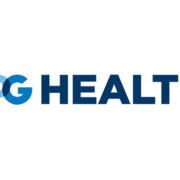Pharma advertising’s branding problem in 2023
Pharma advertising’s branding problem in 2023
By John Kenny, EVERSANA INTOUCH
2023 was a year of many ups and downs. Pharmaceutical advertising is now the number two advertising category in the United States, but with that, the need for brands to stand out has never been greater.
Recently, our team analyzed the top 50 pharma brand campaigns in 2023. The exercise not only was helpful to reflect on the amazing work in this industry over the past 12 months, but it also revealed that the proven creative elements that normally drive results for brands are not always being used in pharma direct-to-consumer (DTC) campaigns. Really? Let’s dig in more.
Our analysis brought several key points to life.
First, it’s hard to justify investing advertising dollars if your efforts only benefit the competition. A recent study found that DTC advertising campaigns across pharma only captured one-third of the sales impact of their media spend! The rest — or two out of every three dollars spent — lifted the sales volumes of competitors.1 Too often pharma brand advertising is selling compelling health benefits, but in a way that insufficiently focuses on the actual brand delivering benefits.
As one marketing team we’ve worked with told us earlier this year, “We’ve been spending tens of millions of dollars a year on brand advertising for nearly a decade, but hardly anyone’s heard of our brand.” That’s a problem.
But the good news is, we now know more than ever what elements drive effective branding. Numerous studies from academia (Ehrenberg Bass Institute), digital platforms (Meta), and market research providers (IPSOS) all point to the same solution.
Meta believes that the number one reason brand campaigns benefit competitors is a lack of distinct brand assets.2 And research from both IPSOS and the Ehrenberg Bass Institute identify the same set of highly effective distinct brand assets — characters, celebrities, brand melodies, and very distinct visual design elements that are always present. Additionally, in the case of brand melodies, they can often be recognized even when viewers are not viewing the creative.3,4
Our team commissioned an analysis of the top 50 largest pharma media spenders in 2023, representing more than five billion dollars of media investments to access just how the pharma industry is adopting the new evidence-based approach to creative development.5
What we found was shocking. Overwhelmingly, pharma ads were not using the branding elements that are most associated with high branded attention. Specifically:
- Only 13 percent were using branded audio devices, like jingles and mnemonics.
- Only 5 percent of campaigns were leveraging the stopping power of celebrities.
- And, only 2 percent were investing in a brand mascot or character — the visual device most associated with high branded attention.
Instead, our research concluded that pharma advertising focuses its creative elements on devices like logos that are peripheral to the visual focus of an advertisement.
We also found the industry puts its dollars towards taglines, which only appear at the end of an advertisement, or on other branded visual design. And while this can be effective, it can only do so if the visual is truly distinctive and pervasive to the advertising campaign – a discipline we rarely saw in most of the audited campaigns.
We then went one step deeper to see what this all means.
Our team took our analysis work on the percentage usage of creative elements in the top 50 brands 2023 media spend with an IPSOS analysis of what creative elements are most effective at driving branding attention (see Table 1). What we learned was the pattern was clear — the more effective the branding element, the lower the percentage chance that the element was present in 2023 pharma advertising. Specifically, we found:
- Logos were present in 100 percent of pharma campaigns but are only associated with a 1.17X likelihood of an ad gaining high branded attention.
In contrast, brand characters are only present in 2 percent of pharma campaigns but associated with a six times higher probability of capturing high branded attention.

Table 1. Association between usage of creative elements in pharma DTC campaigns and their likelihood of capturing high vs. low branded attention.
So why are distinctive brand elements so critical to pharma marketing effectiveness? Most audiences are not able to immediately respond to pharma DTC campaigns. They may be still seeking a diagnosis, attempting success with a generic first line treatment, or simply waiting for an available appointment with a qualified medical professional.
The ability to act on the information provided in a pharma ad is frequently weeks or months away for a patient, which is why it’s important that when patients seek care, these campaigns be recognized or remembered when they do talk to their doctor. This is especially important in a category where brand names are difficult to recall.
Here’s where distinctive brand assets can help. As Jenni Romaniuk, research professor at the Ehrenberg Bass Institute and author of “Building Distinctive Brand Assets,” noted, these creative elements make it easy for consumers to notice, recall, and request “the Cyndi Lauper drug,” the “little blue pill,” and “the slow turkey product for smoking cessation.”
All these devices are more easily remembered and recognized than their FDA-approved brand names or their squiggly logos in the bottom right-hand corner of the screen. Can you remember or draw the logos from memory of these multi-million campaigns? Most cannot.
Characters and celebrities work because our brains are hard wired to recognize and remember people. Rhyming brand jingles and melodies are even easier to remember, and don’t even require your audience to be viewing the ad to recognize it being played in the background. And all these elements are central to every frame of the advertisement, so even partial attention generates a branded impact. In contrast, logos are typically peripheral to the focus of attention in an ad and taglines require holding attention right through to the end of an advertisement, which is a big challenge in an increasingly distracted era.
Yes, logos and taglines are frequently powerful distinct brand assets in non-pharma marketing categories. But “Just Do It,” “Keep Walking,” and the McDonald’s “Arches” have had decades of repeated reinforcement to gain fame and recognition. The pharma industry’s limited time period before brands lose exclusivity to generics means we don’t have time or the media dollars to invest in weaker branding elements to generate the fame and recognition required for brand campaigns to be effective.
So, if pharma campaigns are not concentrating enough on branding their campaigns, where are they creatively focused? Overwhelmingly, pharma advertising is focused on featuring multiple generic lifestyle activities. Our analysis found that in 2023, more than half of the top 50 pharma brand campaigns featured three or more generic lifestyle activities (see Table 2).
On one level, this makes sense. It’s an easy proof point for a drug’s effectiveness to show a patient’s ability to get back to everyday activities. However, when showing multiple activities, it not only increases the amount of information and focus required to understand the ad. It also reduces the amount of time available for the brand to ensure the advertisement is correctly attributed to the right brand.
Nor are the activities portrayed in the ads unique enough to become associated with a particular brand. If we look at the top activities, there is an overreliance on the same set of activities: walking, socializing, playing games, etc. (see Figure 1). Rarely is there any investment of time in any one unique activity for it to become associated with the brand.
In the end, as we wrapped up our analysis, we concluded the reason for the weak association between media spend and brand lift becomes clear. Brands are overinvesting in depicting multiple generic activities to show the positive impact of their drugs without investing in the creative energy to build up distinctive assets that would drive better long-term recognition and recall.
The good news is we have tremendous opportunities to do more and to improve in 2024 as brand owners in pharma. We know the sales impact successful brand association drives, and we know the importance of brand distinctiveness and creative elements to drive branding. In 2024 pharma marketers have an incredible opportunity to increase the effectiveness of their brand campaigns in driving awareness of treatments that can transform lives. Let’s all do our part to make the amazing work we do even better in the new year.
References
-
Shapiro, B. (May 2022). “Promoting Wellness or Waste? Evidence from Antidepressant Advertising.” American Economic Journal: Microeconomics. Vol. 14, No. 2,
-
Facebook IQ. (March 25, 2022). “The Value of Performance Marketing.” Facebook for Business.
-
IPSOS. (February 2022). “The Power of You: Why distinctive brand assets are a driving force of creative effectiveness.”
-
Romaniuk, J. (2018). “Building Distinctive Brand Assets”. Oxford University Press.
-
Vivvex: Top Fifty Pharma Brands Media Spend. 1/1/23 – 10/16/23.
|
John Kenny, Senior Vice President, Head of Strategic Planning, EVERSANA INTOUCH As head of EVERSANA INTOUCH’s strategic planning group, John Kenny is responsible for working with the strategic planning team to continually evolve strategic point of view and approach, while bringing the most innovative and effective solutions to clients’ brands. Kenny has worked in the pharma category for more than 15 years, working on countless brands in categories as diverse as oncology, rare, dermatology, neurology, and gastroenterology, for both HCP and patient campaigns. His work has received numerous creative awards, including a 2022 Cannes Lion Grand Prix in Creative Effectiveness. |













